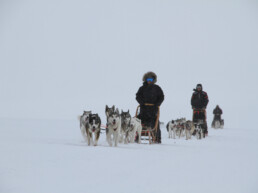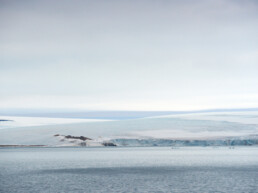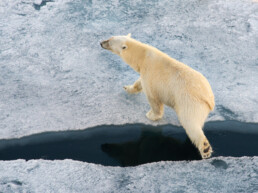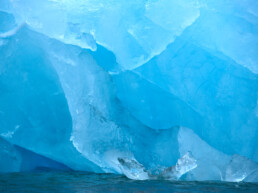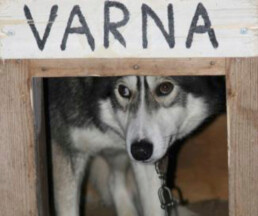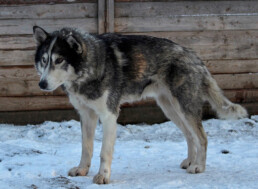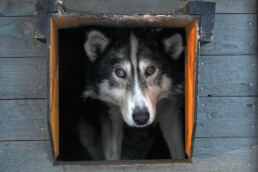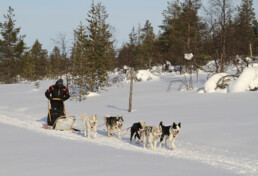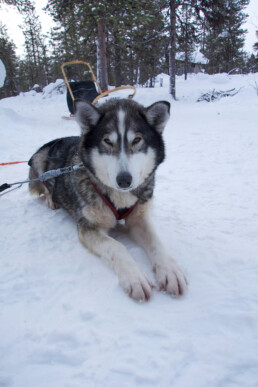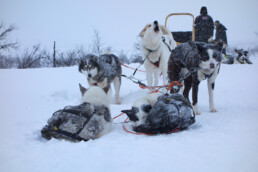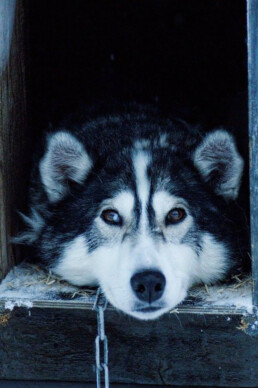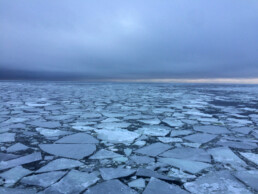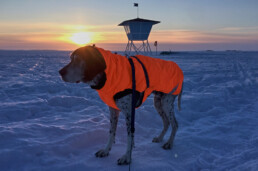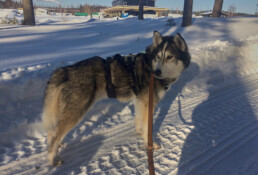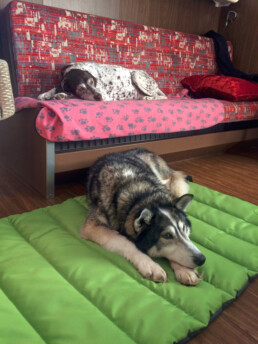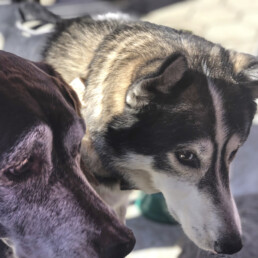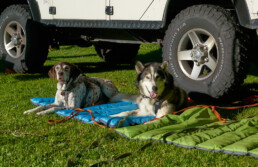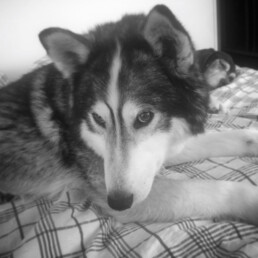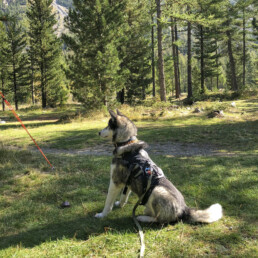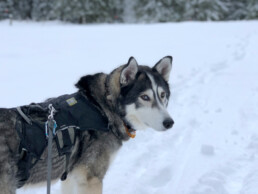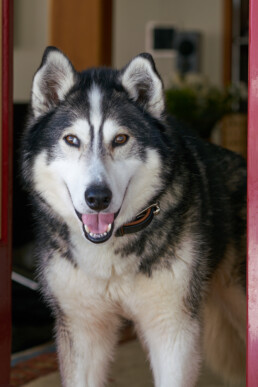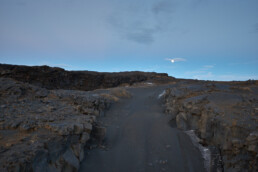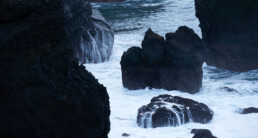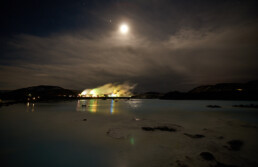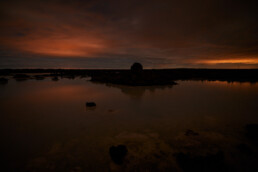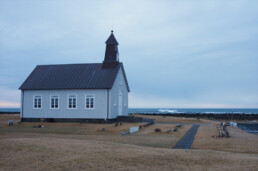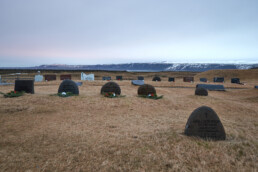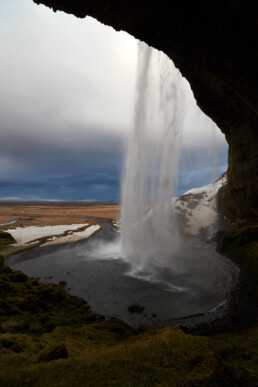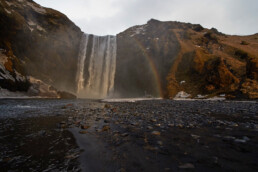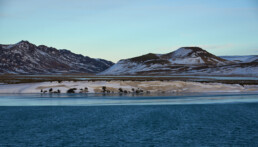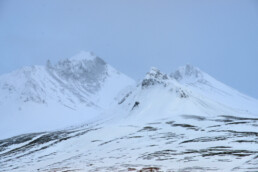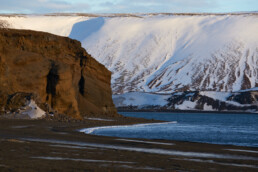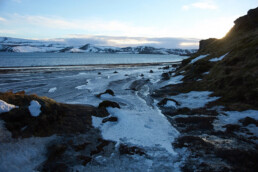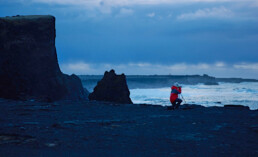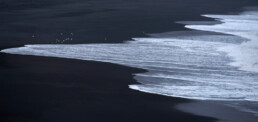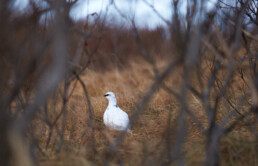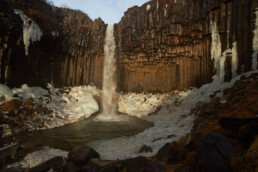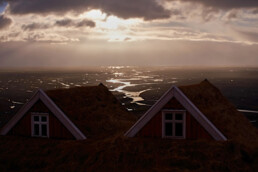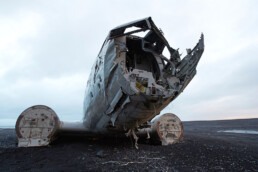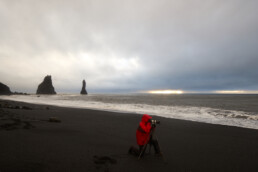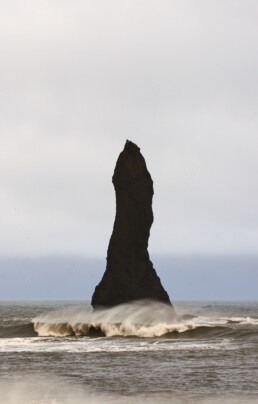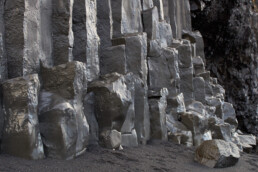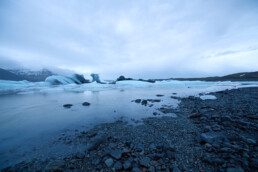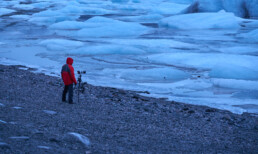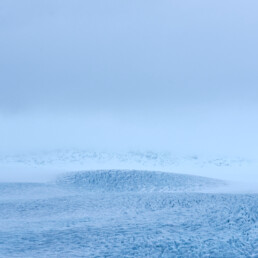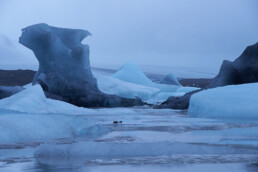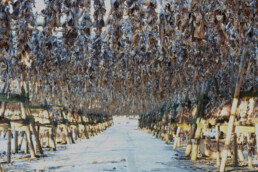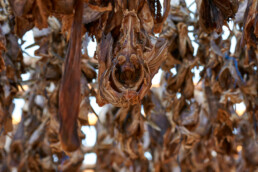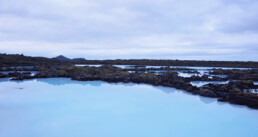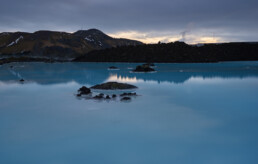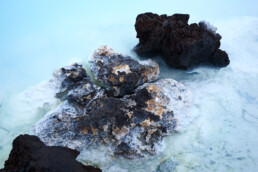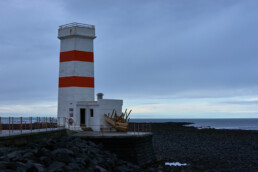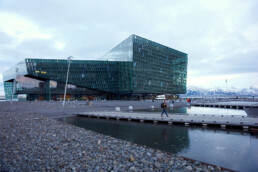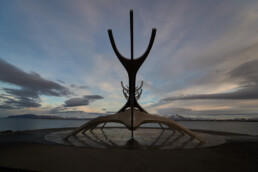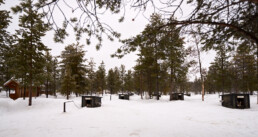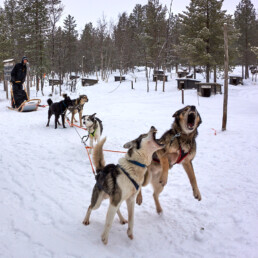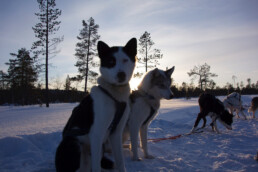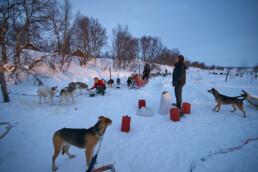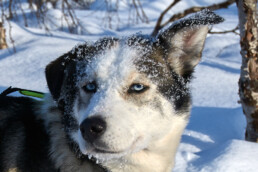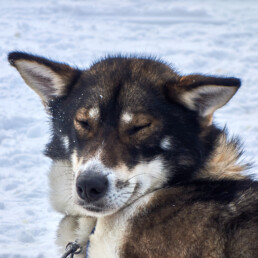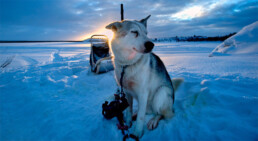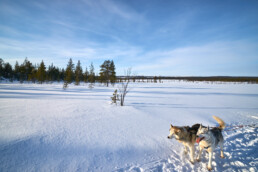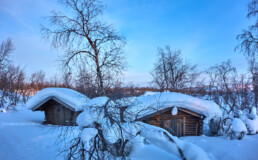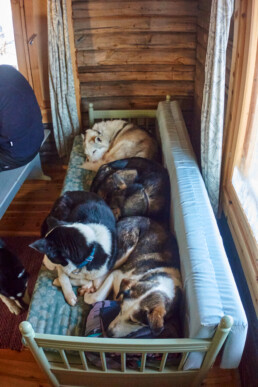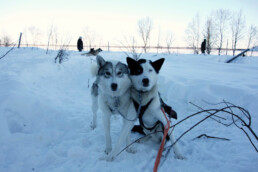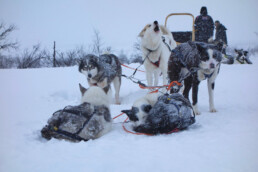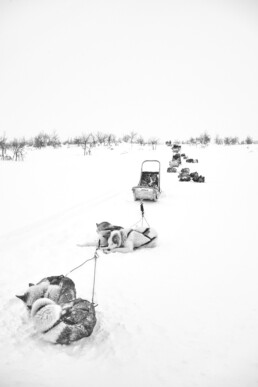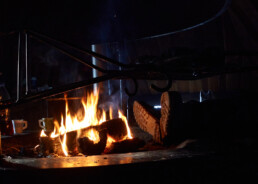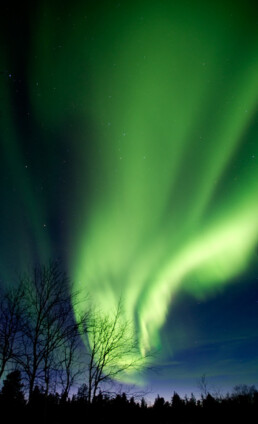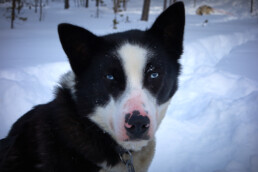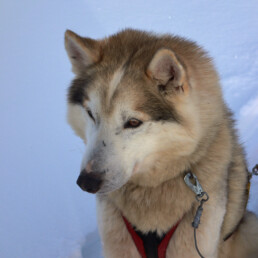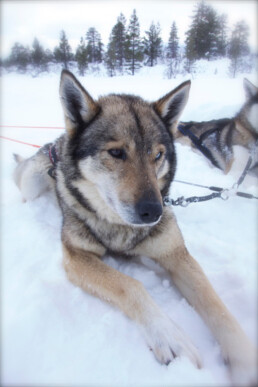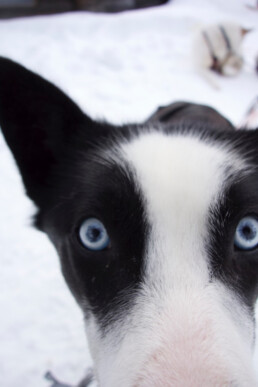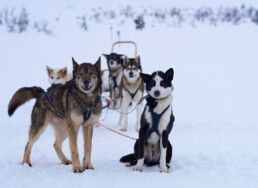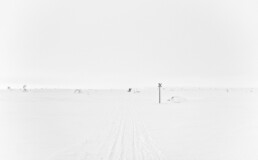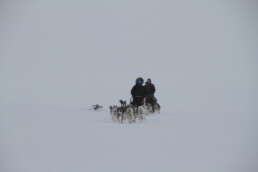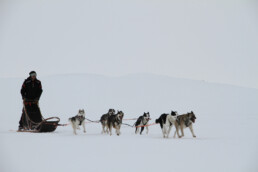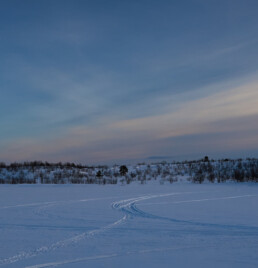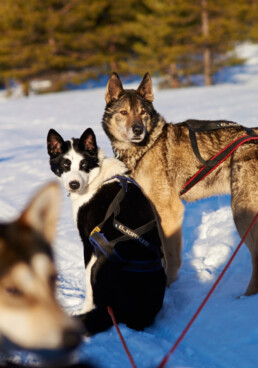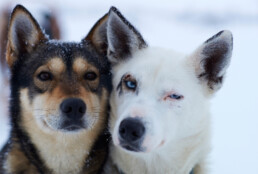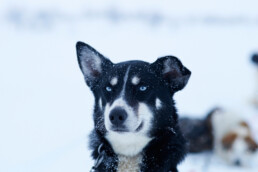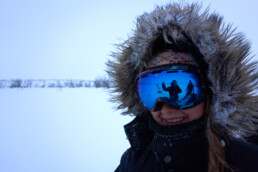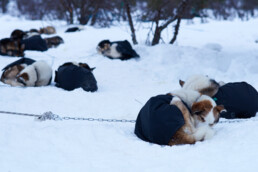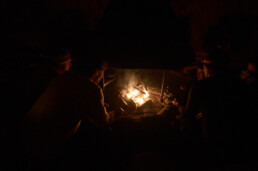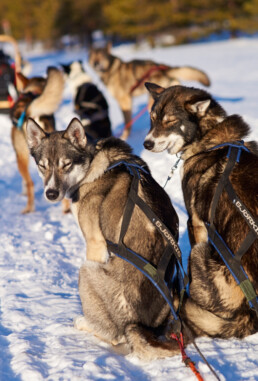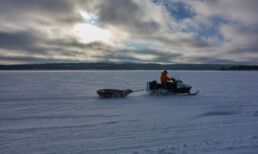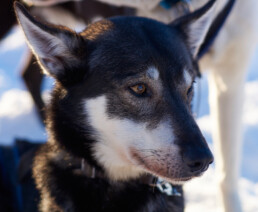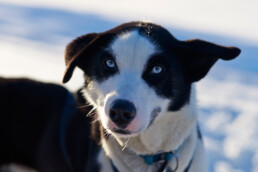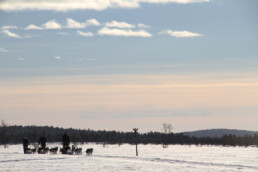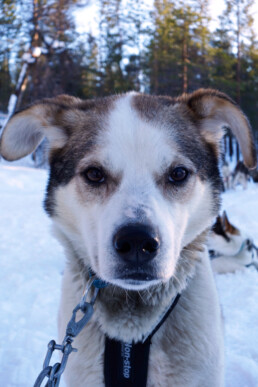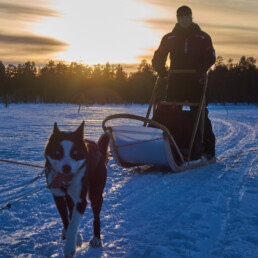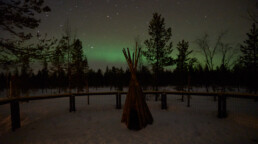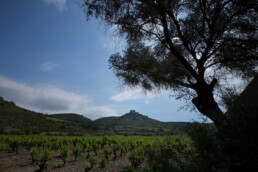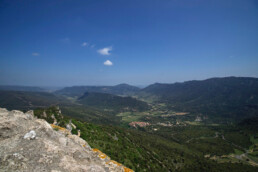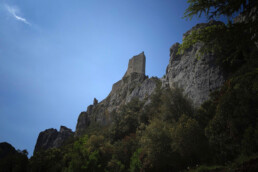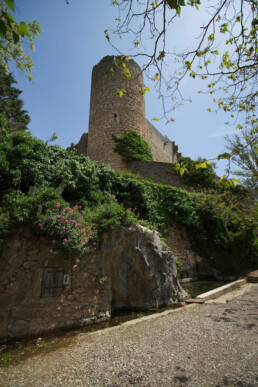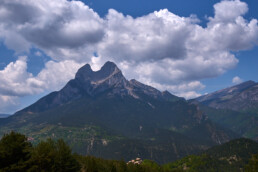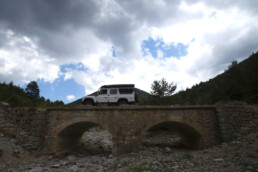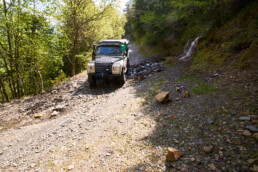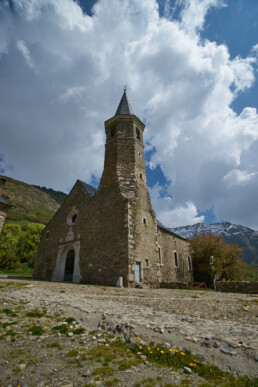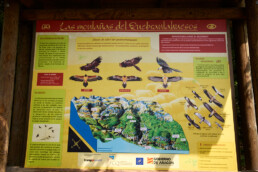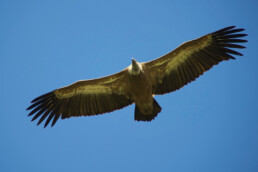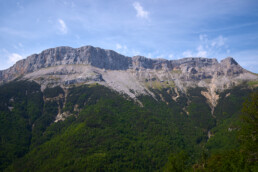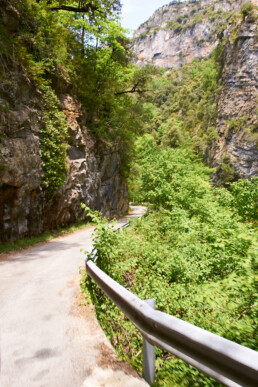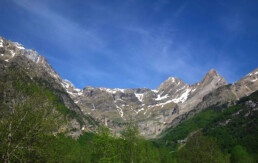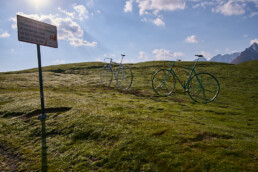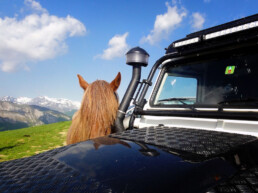Varna EN
Varna
Varna was twice on tour with us, both times Alexander had him “in the wheel” on the sled and he somehow liked this shy, calm dog. A good year after Eka had moved in with us, Varna appeared on Hetta Huskies’ “for adoption soon” list. 3 dogs, of which 2 were extremely shy would have been too much for us. We decided to sponsor Varna because we thought he wouldn’t have an easy time finding a suitable home. When Eka died in December 2017, it soon became clear that we would go on another long journey towards north to pick up Varna by the end of the season in spring. The fact that Jade, with her 16 years, was allowed to join us again, almost seems like a miracle. She was a great help for Eka as well as for Varna in starting their new life.
Varna – Alaskan Husky – born in February 2007. Varna also spent his first year of life on the 350+ Husky Farm in Inari and joined Hetta Huskies together with Eka and about 40 other dogs in 2008.
Anna describes him as follows: “From the first moment he came to us from Juha Pekka’s farm, he was extremely shy – he was probably one of the two shyest dogs that have ever been on our farm”. After 11 years as a “good soul” on the sled, he was allowed to join us in spring 2018 to spend his retirement in the Swiss Alps.
- Position in Team: Wheel Dog
- Running Distance in his last season 2017 / 2018: 906 km
- Overall running distance with Hetta Huskies is not known to us.
click on the pic
May I join you
Hetta Huskies program for retired sled dogs
Gliding with sleds and dogs through white winter landscapes. This branch of tourism is trendy.
Sled dogs work hard all their lives to make such adventures possible for (us) tourists. With approx. 10 years, sometimes already earlier, efficiency and running joy diminish. Once at this point, these dogs often have no more future. They get ” the bullet “…. This happens not only in Alaska and Canada but unfortunately also in Europe.
But not with Hetta Huskies. The owners of the farm are following a “no cull (kill)” policy. They are looking for a new home for their oldies and those who cannot find one or cannot be placed for other reasons stay on the farm. There is a sponsorship program for these dogs.
I don’t know exactly how many Hetta Huskies have already found a new home but they are spread all over the world: Finland – Germany – Great Britain – Ireland – France – USA and Canada. In Switzerland alone 8 of them have found “their new people”!
The Hetta Huskies Adoption Follow Up Form shows that the commitment does not end with the handover of the dogs to the new owners – here at the example of Varna. They also maintain a Facebook group “Hetta Huskies Rehomed” on which everyone can share their experiences.
Adoption Follow Up using the example of Varna:
What does your Hetta husky spend most of their time doing?
- He loves to hang around, being lazy, sleep or just keep an eye on what’s going on around him
- „reading the news“ on his daily walks (twice a day)
New things that your sled dog (and you) have learned since the adoption:
- He learned that it’s cool to sleep on the bed (never tried the sofa so far), using elevators, cable cars, roam around free inside and explore his new living space, walking stairs….
- He had to learn that I am not a sled on the other end of the leash (sometimes he forgets…)
The most challenging aspect of adopting a sled dog:
- As Varna was (is) a shy dog, the biggest challenge was to gain his confidence and make him feel comfortable in his new home.
- From his previous life as a working dog, Varna had a deficit of knowledge of many little things in our daily life e.g. walking stairs, move around free in the house, cats, little dogs etc. all this needs time and patience but is worth it!
Suggestions for other people thinking about adopting a retired sled dog:
- It is good to know something about the character of sleddogs in general (Siberians, Malamutes and maybe other possible involved breeds as Laikas etc. for example when adopting an Alaskan)
- TIME! It is important to have time. Best is , when your retired sleddie can join you as much as possible. They don’t like to be alone and they are so thankful when you have time to introduce them with patience to all the new things in their new life. If you adopt an oldie, it’s like „re-educate grandpa“
- If you adopt a shy dog, give them space. They might not like to much of cuddles right away, don’t be disappointed it will come step by step.
Any unexpected behaviour or health findings since the adoption:
- We knew Varna before adoption, as he was in our team twice. In fact he is less shy than we expected him to be but he has his ups and downs. He can be very funny when he shows joy and he has his own style of communication like rumble and snarl instead of ordinary barking.
- He also has some difficulties to chew hard things although he has no plaque – maybe it’s more kind of a „bite inhibition“
Additional comments:
We should always remember that these retired sled dogs had been working all their life to provide people good adventures, that they lived outside in all conditions, all their life and that therefore they all deserve to spend a good retirement on a comfy sofa with much love and care.
About
About
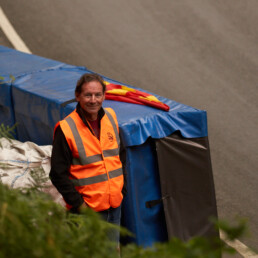
Alexander 50+
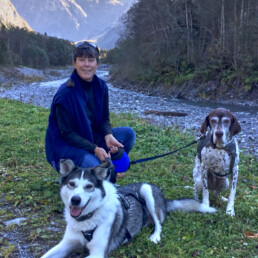
Felicitas 50+
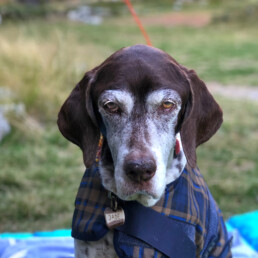
Jade Hunting Dog (2002-2018) more than 37’000km Jade joined us on our travels in the Land Rover, not counting the small excursions in Switzerland. She has moved on – but the good memories remain….
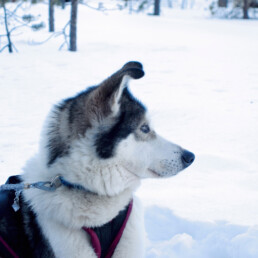
Eka Sled Dog in retirement (2005-2017)
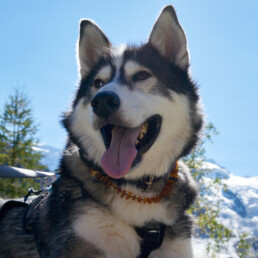
Varna Sled Dog in retirement (2007-2019)

Owl Sled Dog in retirement
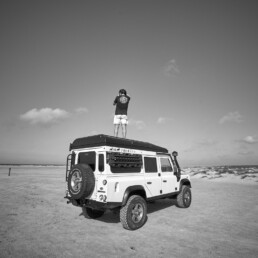
Land Rover Defender 110 TD4 SE “Ice”Landi 2010 – customized by Overland Technics
A few thoughts on climate, environment and tourism:
Our “Bucket List” would be long:
- Greenland
- Patagonia
- Antarctica
- New Zealand
- Tasmania
But neither the emperor penguins in Antarctica nor the polar bears in Greenland are waiting for us. So we have decided not to travel by airplane or cruise vessel in the future anymore and therefore abandon our bucket list. Of course we will continue to travel in Europe with our 4-wheeled holiday home from time to time. Maybe we just want to go from A to B and enjoy the simplicity of being and explore the nature by hiking with our dogs.
Iceland in winter
Iceland in Winter
Auroras in Iceland in winter -I had my ideas…. Alexander wasn’t very enthusiastic about my short term plans.
Anyway, we decided to pack our bags and go for it!
Due to long and difficult travel in winter, the Land Rover had to stay at home.
The easy way was a flight via Copenhagen to Keflavik and a rental car. Seven days, limited to the south, with a focus on places we missed on our first trip.
The initial plan was a photo trip – to catch auroras of course- so that is how everything was organized at home: Sunrise – sunset, how, when, where….the programm is called „ The Photographers Ephemeris“, Spaceweather and Iceland Meteo are te tools to use.
Day 1:
Arriving in Keflavik, get the SUV and let’s go on 425 south. Hurry up to the „Bridge of the continents“ sunset is at 4:22 pm and the almost fullmoon was up yet. Photoshooting. It’s windy and cold!
We spend two nights at the Northern Light Inn, right next to the blue lagoon. Sky was almost clear so afer dinner, we went to the lagoon, hoping to catch auroras and wait and wait and wait….
Day 2:
10 am, slowly we find daylight. Back on 425 south/west to the rocks of Reykjanesviti and the “bubble field“ of Gunnuhver. It’s nice today but extremely windy. We drive on 427 east and 42 north to the lakes Graenavatn and Kleifarvatn, then direction Hafnarfjörður. On the way we see a traditional wooden Stockfisch drying construction. After all that wind, the cold fingers and a red nose, a plunge into the blue lagoon was scheduled this evening!
Day 3:
Today we head east – to the waterfalls along ring road 1, with a stopover at the Strandarkirka of Selvogur (425 east). Sidetrip to Seljalandsfoss – one can walk behind the waterfall – a little icy but possible to do. We are almost alone….N° „1“ towards east to Skógafoss. We have the entire panorama for ourselves again. Tonight we stay at „Grand Guesthouse Gardakot“, a lovely place only few minutes from Dyrhólaey with self catering in the evening and a great farmer’s breakfast in the morning“. But on the way we make a sidetrip to the US Navy Crashed DC3 somewhere in Sölhejmanssanður. We’ve found it – yeeessss – without being stuck in the sander. Quick photos before the next gale is comming up – we don’t need sand-blasted equipment! Soon we’re in a nice warm living room.
Day 4:
Something between strong wind and real storm. Our photoshooting at Dyrhólaey is quite challenging. Of course we try to stay on our two feet… Later we drive the short distance on 215 to Reynishvefti – it seems to be more calm over there. But we drive into the next front – and take pictures on the beach in the rain. Direction east on N°„1“ towards Skaftafell and Svartifoss. No go, to much rain and wind, so we drive ahead to reach Fjallsarlon at the blue hour. All alone, between two weather fronts – just beautiful, in the land of elves…. Tonight we stay at Hali Country Hotel with it’s authentic farmer’s food.
Day 5:
Rain and wind, we drive back to Reykjavik. But as we are optimists, we believe to reach Svartifoss in sunshine. „ Someone“ is on our side. Our hike, one more time between weather fronts, brings us from the old farmhouses of Sel to Svartifoss and back. We continue on ring road 1 towards Reykjavik. Icelantic specialities at „Einar Ben“ in downtown of Reykjavik in the evening.
Day 6:
Culture tour in the city, then to Keflavik. It’s our last day today. We drive to the lighthouse at Garður, then straight to the blue lagoon. First photoshooting at sunset, then the plunge and a great dinner at the lagoon’s restaurant.
Tag 7:
Via Oslo back home…….
……Iceland?
Iceland is always worth a trip – no matter how the weather is, with or without auroras, summer or winter…
Iceland is beautiful – just beautiful…..
click on the pic
Lapland with Huskies
On Husky Tour in Arctic Finland
Alexander had the brilliant idea to go on a husky tour with the whole family. A small adventure with a great impact and significant long-term consequences…I was looking for some informations on the internet about how, when and where. That it should be in Finland, better said in Lapland, north of the Arctic Circle, was actually quite clear. We finally ended up at Hetta Huskies in Enontekio, near the Norwegian border, with Pasi Ikonen and Anna McCormack. Together they run their own farm with meanwhile 200+ Huskies (from Puppy to Grandpa) and offer various excursions and tours.
In both years we have decided for a 7-day Arctic Mushing program “en famille” i.e. 5 – days with our own sled and a team of 5 (sometimes 6) Huskies, out in the pampa .
And how does such a Husky Tour go?
The first day is mainly for preparation:
The clothes will be checked and where necessary additional warming material or other equipment such as a headlamp will be provided.
Then we get to know the dogs, followed by instructions on how to harness and handle the sleds. Finally when everyone is ready, a first training or warm-up round is started. On the first tour it was 6 km, on the second it was 30 km around Hetta – we already knew how it was going and had accordingly less preparation time.
This 1st day also helps to put together the final dog teams for the tour.
On the 2nd day the main trip begins. During the next 5 days the dogs lead us over frozen lakes and moorlands, through light forests – where fox and hare say good night to each other – and over one or the other hill.
They know the way and let us enjoy the landscape, the silence and the cold tip of our noses… If it goes uphill, they ask us for support with a short look backwards – if it goes downhill, we have to slow them down. The nights are spent in comfortable huts, simple Mokkis and even simpler Kotas. Often we cook and heat by candlelight at the open fire, sleep on reindeer skins and when the dogs howl at night then “Tomte Tummetott” might be somewhere on the way looking to the right. (Tomte Tummetott – a children’s book series by Astid Lindgren). It goes without saying that before and after the day’s stage one takes care of the dogs’ well-being, feed them and helps to set up and remove the night camp….
The last day I quote from my diary of 2014:
“Our tour is already approaching its end and it’s back to Hetta on a last loop. After 5 “running” days, the dogs enjoy being back in their huts, greeting those at home and sipping the warm meat soup that we are allowed to offer them. Bye bye – see you ……”
Distance:
In 5 days we covered about 190 km and the longest stage was 45 km.
On average we drove 5 hours a day.
Temperatures and weather:
max. approx. -5°C min. approx. -22°C the coldest night was at -25°C from sun to snowfall we had everything
Landscape:
The photos and video clip speak for themselves……
Our guides:
1st Tour Priska Burri – For Priska it was the 1st big tour she led. She did a great job.
2nd Tour Doris Kallen from Kandersteg – And like last year everything went under expert supervision of Pasi – thanks for the good food and drinks in the evening 😉
Anecdotes:
Falling off the sled is a must… at least once…..that’s part of the experience. Whether uphill or downhill, whether you just look at the landscape instead of the dogs or cross a road. Sooner or later we are all diving into the soft! Deep snow.
Never stop when a snowmobile is to be crossed – it is better the snowmobile stops. But we stopped to let a reindeer farmer pass who had loaded a 600 kg hay bale on the trailer. Well – the dogs had a longer break and we had a little “extra workout”. Fortunately the farmer was not too grumpy and grateful for our help. Dogs as foot or bed warmer… every night we had additional guests in the hut. Especially in cold nights the “short-haired” and sensitive dogs were allowed to keep us company at the cosy warmth.
Pasi, Anna, the dogs and their team:
You can see that people with a lot of adventure experience are at work here (Pasi is the 1st Finn to reach the South Pole on skis without help from outside). Those who are not well equipped will be provided with material. (boots, gloves, jackets etc.) also the sleeping bags are designed for low temperatures. Pasi and/or employees accompany the teams on the snowmobile from a comfortable distance, transport the dog food and everything else needed.
The keeping of the dogs is very good and the emphasis is very much on transparency and information.
Especially nice also the fact that we had on our 2nd tour again a few of our favorites from last year in the team, including Atlas, Bino, Eka, Leon, Monthy, Nalle and a few “O” dogs, to name just a few. Of course you take them all, even those not mentioned, into your heart….
Conclusion:
The silence, the wide untouched landscape, the interaction with the dogs, the simplicity of the huts – there is a certain risk of addiction!
The significant long-term consequences:
check out “from sled dog to couch potato”.
click on the pic
Pirineo
Pirineo
Winter was long – to long. But we had time to „pep up“ our Land Rover by more customizing work. No rear seats anymore but more storage room and a good icebox. MaxTrax and a winch.
Ready to go!
Didn‘t I write: we would come back to Occitanie….
In 9 stages we made our way to Southern France, „Pays des Cathares“ and the spanish/french Pyrenees, to the center of France and back home again.
In total 3‘421 km through breathtaking landscape.
Stage 1:
HWY to Narbonne-Sud, due to strong wind, we had to stay at a hotel.
Stage 2:
„Route des Chateaux des Cathares“ from Narbonne via D611 to Tuchan & Chateau Aguillar, via Padern to Villerouge-Termenès (Chateau), Auriac & Chateau Peyrepertuse (small road to the ruins). Passing the Grau de Maury with view to Chateau Queribus, Maury to Collioure where we stayed at the lovely Camping „Les Amandiers“.
Stage 3:
Collioure via D115, Amélie-les-Bains-Palalda, Col d‘Ares to Spain. Continued on C38 & C26 to Ripoll – B402 till Guardiola de Bergueda. On B400 into Parc Natural del Cadi-Moixero – Paso di Josa to La Seu d‘Urgell. N260 into Parque Natural de l‘alt Pireneu, C13 to Llavorsi and L504 into the (valley) Vall de Cardós where we spent the night at Camping Bordes de Graus.
350 km driving time: approx. 7 hours
Stage 4:
Back to Llavorsi – C13 (north) – Esterri d‘Aneu – C147 till Alós d‘Isil.
From here a track brings you into the Reserva Nacional de Alto Pallars-Aran and round the Pico de Moredo to the old church from Montgarri.
The track is open from June till November.
C142b – in Baqueira at the Val d‘Aran you get back onto the C28. N230 to France, D618 Coll del Portillón to Bagnères-de-Luchon – Col de Peyresourde – Col de Val Louron and through the Túnel de Bielsa back to Spain. A138 – Bielsa – Valle de Pineta (Camping).
This valley is between Riserva Nacional de los Circos and the Parque Nacional de Ordesa y Monte Perdido.
223 km driving time depending on track condition approx. 5-6 hours
Stage 5:
Trip to the home of the bearded vultures: A138 – Lafortunada – direction Tela – Rebilla (Revilla) – same way back. A138 – Laspuna – HU631 – Valle de Añiscolo and along the Desfiladero de las Cambras & Rio Vellos canyon – Valle de Vio – N260 – A135 direction Valle d‘Ordesa.
Bujaruelo – partly on a track to the Refugio & Camping San Nicolas. Unfortunately the camping was closed so back to the A136 – Col du Portalet (France) till Laruns – Camping du Valentin.
227 km driving time approx. 4:45 hours
Stage 6:
Col d‘Aubisque – Col du Soulour (D918) – Lourdes – AB A64 till Béziers – Portiragnes-Plage (Camping)
Stage 7:
Side trip into the Parc National des Cevennes:
A75 exit Nr. 47 La Cavalerie – D991 – Canyon de la Dourbie – D29 Chaos de Montpelier-le-Vieux (Single Trail but not track) – Gorges du Tarn -La Malène – back to A75 (north) – Ainay-le-Chateau – Isle-et-Bardais – to the little lake Etang de Pirot and its Camping des Ecossais.
Stage 8:
Along the river Cher to the Centre de la France near Bruère-Allichamps – stop at Magny-Cours Race Track – Beaune (Hotel).
Stage 9:
An HWY back home.
what to see:
- Chateau Peyrepertuse. There is a very nice walking trail to the ruins. Entrance fee: 6 Euros. Wonderful view
Naturescape and Fauna:
- Riserva Nacional Alt Aneu and the track around Pico Moredo. Alt Aneu resp. Val d‘Aran is home of the brown bear.
- Parque Nacional de Ordesa y Monte Perdido with its side valleys Home of the bearded vultures.
- Col d‘Aubisque: Beautiful view and very nice walking trails – don‘t miss the „Gâteaux Basque“ at the Hospiz restaurant.
- Col du Soulour: In this area you can see griffon vultures.
click on the pic



